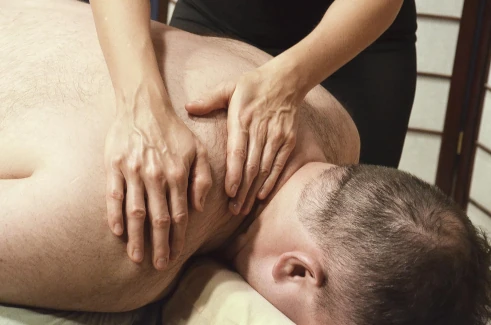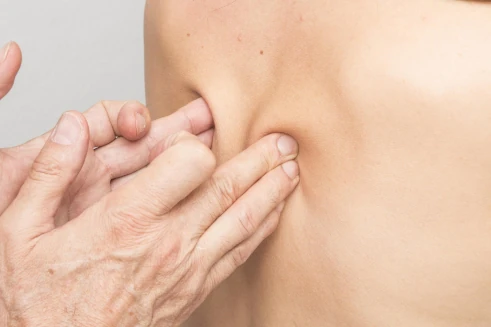Exploring Hawaiian and Japanese Massage Techniques
Monday, May 30, 2022, 12:45 PM
Holistic Health Treatments You Should Try
There are many holistic health therapies practised worldwide. Some of the most well-known types include massage therapy, reflexology, and aromatherapy.
When booking a massage therapy session, it's not uncommon to stick to the most popular or convenient ones. Perhaps deep tissue massage is the most accessible to you or Swedish massage is the only one you've ever tried.
We're here to tell you that there are more to choose from!
This article explores different types of massage therapy, each with its own set of techniques, refined to improve your physical and mental health.

Lomilomi
What Is Lomilomi?
Lomilomi is a Hawaiian massage treatment that is gaining popularity worldwide. In Hawaiian, "Lomi" means to knead, rub, or soothe. This ancient massage system treats the physical, mental, and emotional health as one unit.
Many believe that the practice of Lomilomi first originated in Polynesia, and through colonization, it was introduced to Hawaiians. These practitioners, locally known as Kahunas, adopted the practice and modified it to represent their unique style.
The principles of Lomilomi share similarities with Traditional Chinese Medicine's idea of qi, translated as "vital life force." Qi projects the idea that full healing and restoration can only take place when people address both the physical and substantial (energy that flows through our bodies) branches of life.
What Are the Benefits?
Lomilomi aims to:
- release tension, trauma, and stress
- assist with blood flow
- stimulate the lymphatic system
- relieve stored emotions and blocked energy
- detoxify the body
- provide a sense of peace and harmony through more profound relaxation
Children and pregnant women are common recipients of Lomilomi treatments in Hawaii to ease an upset stomach or aid in labour.
What Can I Expect in My Appointment?
The Lomilomi technique uses long, continuous, and gentle strokes. Your therapist may transition from one area of your body to the next without you even noticing, or they may work on both sides of your body simultaneously — don't worry, it's normal!
Many practitioners claim no two Lomilomi sessions are the same. Many strokes are intuitive and based on how the body responds to the treatment. Lomilomi wants to release the mind and the body from any tension.
In achieving this goal, practitioners don't focus on one area of the body at any given time; they work on everything at the same time. This technique prevents the mind from focusing on a specific area, which impedes the ability to relax.
In traditional Lomilomi, massage sessions begin with chants, prayer, and meditation. Clients often lie on a hand-woven mat on the floor. In these traditional settings, there is little to no clothing coverage to help glide the strokes on the body.
In modern-day Lomilomi, massage sessions clients lie on a massage table, their level of comfort determining their coverage. Massage therapists often have very thin sheets to drape over the body.

Shiatsu
What is Shiatsu?
Shiatsu is a form of massage therapy that originated in Japan. In Japanese, the word "Shiatsu" translates to finger pressure. Shiatsu practitioners mainly use their fingers, thumbs, and palms to integrate kneading, pressing, tapping, and stretching techniques.
Many people associate Shiatsu as having stemmed from Amma massage, a technique like acupressure. However, others believe Shiatsu was invented by Tokujiro Namikoshi in the 1920s while treating his mother's rheumatoid arthritis.
The principles of Shiatsu also revolve around the concept of qi. Shiatsu therapists believe that when qi is abundant, the health is in good condition and the flow of qi is unobstructed.
However, when the qi is out of balance, the health is in poor condition. Symptoms arise as the flow of qi is obstructed.
Shiatsu therapists are trained to recognize energy imbalances and tailor their treatments to fit the client's overall needs.
What Are the Benefits?
Shiatsu aims to:
- reduce muscle stiffness
- stimulate the skin
- aid digestion
- correct poor posture
- treat pain and illnesses (e.g., headaches, digestive disorders, fatigue, joint pain, etc.)
Shiatsu treatments are considered to have both preventative and remedial effects. Practitioners use Shiatsu to treat chronic conditions and pain like arthritis and sciatica.
What Can I Expect in My Appointment?
In Shiatsu sessions, clients are encouraged to wear comfortable clothing. Unlike traditional massage therapies, Shiatsu treatments do not use oils. Traditionally, clients lie on a futon mat on the floor. However, lying on massage tables is common as well.
At the beginning of a session, the practitioner takes the time to evaluate your energy to determine any imbalance your body presents.
Shiatsu techniques rely heavily on applying pressure to specific areas, kneading, tapping, and stretching to access all the body's qi. Depending on your needs, the therapist may do more rotations and joint mobilizations.
It is also not uncommon for practitioners to reposition your body to allow them to work a specific meridian point.
Give It a Try!
Both Lomilomi and Shiatsu use qi as a guiding factor when treating the body, and both advocate for maintaining overall balance. However, they do have significant differences.
Lomilomi has more spiritual roots, combining prayers and meditation in the treatment. Shiatsu alleviates stress, tension, and pain by applying pressure along the body's meridians. Lomilomi uses oil, and Shiatsu does not.
Lomilomi and Shiatsu are just two of over 60 holistic health practices that the NHPC recognizes. Some practices are more common than others, and each has its distinctive techniques. Common or not, the goal of any therapy is universal: to improve your overall well-being.

